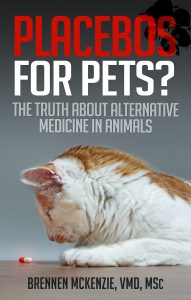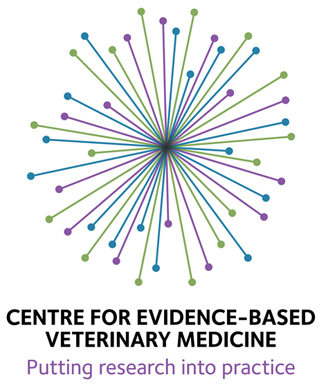This is a cross-post from Science-Based Medicine- CAM and the Law Part 2: Licensure and Scope of Practice Law
This post is intended to illustrate a bit about how medicine, including alternative medicine, is defined and limited legally by state licensure. This is, of course, an enormous topic, especially given the variety of laws and regulations among the 50 states and District of Columbia, and the many, often mutually inconsistent, court decisions interpreting them. A comprehensive survey would resemble Gibbon’s history of Rome and would likely be out-of-date the moment it was finished. My more modest goal here is to highlight a few of the ways in which licensure and scope of practice laws intersect the practice of CAM and give a few representative examples.
The Rise of Medical Licensure
In the 19th century, a bewildering variety of different approaches to maintaining health and treating disease competed for the trust, and dollars, of prospective patients (or their owners, in the case of animal patients). Caveat emptor was the rule in an unregulated medical marketplace. Mainstream medicine was a competitor in this marketplace, though it was hardly science-based to any great extent compared to conventional medical practices today. Homeopathy was another pretty big player, along with osteopathy and numerous other more or less organized schools, as well as many individual snake oil salesmen, faith healers, local providers of folk remedies, and so on.1,2
Throughout the 19th and early 20th centuries, state legislatures passed medical practice acts defining the practice of medicine, the criteria for medical licensure, and the criminal penalties for the unlicensed practice of medicine. The American Medical Association, founded in 1846, played a powerful role in driving and shaping these early enactments of the state police authority to regulate medicine. The AMA-sponsored Flexner Report on medical education released in 1910 did much to shape the criteria states used to award licensure, and thus to shape the content of accepted medical practices. Veterinary medicine lagged a bit behind in this initial licensure movement, with California apparently being the first state to license vets in 1893, but the general legal trend has been much the same as for regulation of human medicine.1,3
What is the Practice of Medicine?
There is some variation in the details of how the practice of medicine is defined in different state practice acts, but all the definitions are quite broad. They give physicians great latitude in the therapies they provide, but they also leave some uncertainty as to what actually constitutes practicing medicine, and there is room for the courts to interpret and clarify the law.
In New York, for example, the law reads:
The practice of medicine is defined as diagnosing, treating, operating or prescribing for any human disease, pain, injury, deformity or physical condition.4
In California, the definition is even broader:
[A]ny person who practices or attempts to practice, or who advertises or holds himself or herself out as practicing, any system or mode of treating the sick or afflicted in this state, or who diagnoses, treats, operates for, or prescribes for any ailment, blemish, deformity, disease, disfigurement, disorder, injury, or other physical or mental condition of any person…5
State veterinary practices acts are also very broad, sometimes even more so than medical practice acts. For example, in California:
A person practices veterinary medicine, surgery, and dentistry, and the various branches thereof, when he or she does any of the following:
(a) Represents himself or herself as engaged in the practice of veterinary medicine, veterinary surgery, or veterinary dentistry in any of its branches.
(b) Diagnoses or prescribes a drug, medicine, appliance, application, or treatment of whatever nature for the prevention, cure or relief of a wound, fracture, bodily injury, or disease of animals.
(c) Administers a drug, medicine, appliance, application, or treatment of whatever nature for the prevention, cure, or relief of a wound, fracture, bodily injury, or disease of animals…
(d) Performs a surgical or dental operation upon an animal.
(e) Performs any manual procedure for the diagnosis or pregnancy, sterility, or infertility upon livestock or Equidae.
(f) Uses any words, letters or titles in such connection or under such circumstances as to induce the belief that the person using them is engaged in the practice of veterinary medicine…6
With such general legal language, it might seem that physicians and veterinarians could do almost anything and call it practicing medicine. And it might also seem dangerous for people who are not licensed to practice medicine to do anything at all to a sick person or animal for fear of violating their state’s medical practice act. However, the states and the courts have created numerous exceptions and limitations to these very general standards.
Some common exceptions are quite sensible and obvious. For example, nurses and other healthcare providers working under physician supervision, physicians working for federal agencies, properly supervised students, lay people providing reasonable first aid or lifesaving care or using widely accepted over-the-counter remedies, and many other similar activities are defined as legitimate and not the unlawful practice of medicine.1
Other exceptions are sometimes less obvious, and they may provide loopholes for alternative medical providers to ply their trades. For example, animals are considered property, not persons, under the law, so their owners and anyone they authorize can do almost anything they like to treat them, within only the limitations of animal cruelty laws, which have very high standards of proof and lax enforcement.3 Some states, such as California, also provide other specific exemptions, such as this one:
Nothing in this chapter [the Medical Practice Act] shall.…regulate, prohibit, or apply to any kind of treatment by prayer, nor interfere in any way with the practice of religion.7
In addition to defining the practice of medicine, the state practice acts also define the criteria required to obtain and maintain a medical license. These often include graduation from an approved educational program with coverage of specified subject matter, practical clinical training, a passing score on licensing examinations, and ongoing professional education. In the early days of medical licensure, it was the development of these criteria that had the greatest impact in terms of promoting scientific medicine and limiting the ability of practitioners of alternative approaches to continuing practicing their forms of medicine.
Licensure of Non-Physicians
In addition to physicians, states also license a number of other medical professions, including providers of alternative therapies. The relevant legislative acts define the scope of practice and criteria for licensure for these providers just as they do for physicians and veterinarians, though the scope of acceptable activities is often far more limited and narrowly defined.
The major CAM methods are the most commonly licensed. Chiropractors are licensed in all 50 states, non-M.D. acupuncturists are licensed in 37 states, naturopaths are licensed in 17 states (though they are specifically prohibited from practicing in 2 states), and “homeopathic physicians” are licensed in 3 states.8 States that do not license such providers do sometimes still explicitly regulate the more common alternative methods, such as acupuncture, within other health or professions statues.
Laws licensing alternative therapists are often very specific, while still leaving a surprising amount of room for subsequent interpretation and controversy. In California, for example, the Acupuncture Licensure Act defines acupuncture directly while also managing to fit in a much broader ideological statement:
In its concern with the need to eliminate the fundamental causes of illness, not simply to remove symptoms, and with the need to treat the whole person, the Legislature intends to establish in this article, a framework for the practice of the art and science of Asian medicine through acupuncture…
“Acupuncture” means the stimulation of a certain point or points on or near the surface of the body by the insertion of needles to prevent or modify the perception of pain or to normalize physiological functions, including pain control, for the treatment of certain diseases or dysfunctions of the body and includes the techniques of electroacupuncture, cupping, and moxibustion.9
The relevant legislation in California concerning chiropractic licensure defines the scope of practice for chiropractors very specifically:
(1) A duly licensed chiropractor may manipulate and adjust the spinal column and other joints of the human body and in the process thereof a chiropractor may manipulate the muscle and connective tissue related thereto.
(2) As part of a course of chiropractic treatment, a duly licensed chiropractor may use all necessary mechanical, hygienic, and sanitary measures incident to the care of the body, including, but not limited to, air, cold, diet, exercise, heat, light, massage, physical culture, rest, ultrasound, water, and physical therapy techniques in the course of chiropractic manipulations and/or adjustments.
(3) Other than as explicitly set forth….a duly licensed chiropractor may treat any condition, disease, or injury in any patient, including a pregnant woman, and may diagnose, so long as such treatment or diagnosis is done in a manner consistent with chiropractic methods and techniques and so long as such methods and treatment do not constitute the practice of medicine by exceeding the legal scope of chiropractic practice as set forth in this section.
(4) A chiropractic license issued in the State of California does not authorize the holder thereof:
(A) to practice surgery or to sever or penetrate tissues of human beings, including, but not limited to severing the umbilical cord;
(B) to deliver a human child or practice obstetrics;
(C) to practice dentistry;
(D) to practice optometry;
(E) to use any drug or medicine included in materia medica;
(F) to use a lithotripter;
(G) to use ultrasound on a fetus for either diagnostic or treatment purposes; or
(H) to perform a mammography.
(5) A duly licensed chiropractor may employ the use of vitamins, food supplements, foods for special dietary use, or proprietary medicines, if the above substances are also included in section 4057 of the Business and Professions Code, so long as such substances are not included in materia medica as defined in section 13 of the Business and Professions Code…
(6) Except as specifically provided in section 302(a)(4), a duly licensed chiropractor may make use of X-ray and thermography equipment for the purposes of diagnosis but not for the purposes of treatment. A duly licensed chiropractor may make use of diagnostic ultrasound equipment for the purposes of neuromuscular skeletal diagnosis.
(7) A duly licensed chiropractor may only practice or attempt to practice or hold himself or herself out as practicing a system of chiropractic….A chiropractor may not hold himself or herself out as being licensed as anything other than a chiropractor or as holding any other healing arts license or as practicing physical therapy or use the term “physical therapy” in advertising unless he or she holds another such license.10
The Devil in the Details
Despite the specificity of such laws and regulations, there is a fair bit of ambiguity as to exactly who is allowed to do what, and state attorneys general and the courts are frequently called upon to interpret these laws. In some states, physicians have been held to be legally permitted to practice alternative therapies even without specific licenses in those approaches, under the general provisions of medical practice. Other states, however, have required physicians to be licensed in these approaches before offering them. And, of course, given the controversial nature of many CAM therapies, physicians run some risk of being sanction for “unprofessional conduct” by their state medical board for offering some unconventional therapies.
In one well-known example, a North Carolina doctor was disciplined by the state medical board or administering homeopathic treatments. The board concluded that since homeopathy “does not conform to the standards of acceptable and prevailing medical practice,” using it constituted unprofessional conduct. After this sanction was reversed by two lower courts (one asserting there was not sufficient evidence to support the board’s conclusions about homeopathy, and the other arguing that it didn’t matter because homeopathy was harmless), the state supreme court upheld the board’s decision.11
The majority argued, quite sensibly, that “a general risk of endangering the public is inherent in any practices which fail to conform to the standards of ‘acceptable and prevailing’ medical practice” regardless of whether the specific treatment was directly harmful. The justices also recognized that “certain aspects of regulating the medical profession plainly require expertise beyond that of a layman” and that “while questions as to the efficacy of homeopathy….may be open to debate among members of the medical profession….the courts are not the proper forum for that debate.”12
Unfortunately, the legislature of North Carolina took a different view, preferring to protect consumer choice and the autonomy of individual providers, and the law was subsequently amended to specifically protect physicians who offer treatments that are “experimental, nontraditional, or that [depart] from acceptable and prevailing medical practices” unless they can be clearly shown to be more harmful than conventional treatments.12
A variety of legal opinions and rulings also exist that clarify (or sometimes obscure) the limits of acceptable therapies licensed alternative practitioners can provide as well. For example, in some states chiropractors can legally provide colonic irrigation, perform pelvic and rectal exams, perform electrocardiograms, provide herbal remedies or nutritional supplements, or perform acupuncture under generous interpretations of the definition of chiropractic.13 However, other states have ruled it a violation of their scope of practice limitations for chiropractors to utilize herbal or nutritional substances in treating patients, perform pelvic exams, perform or order diagnostic blood or urine tests, and engage in other such practices deemed outside of their licensed activities.13 There are similar inconsistencies in the interpretation of what therapies are permissible for other licensed alternative providers as well.
Faith Healing and Secular Spiritual Practices
A particularly interesting area of medical jurisprudence is the relationship of licensing laws to spiritual and religious practices. The tension between individual liberty and freedom of economic activity on the one hand and the role of government in protecting the public health on the other is weak tea compared to the conflict between government police powers and the legal and cultural imperatives in the U.S. to protect religious freedom. Religion may be specifically excluded from medical regulation, as in the California code above or in states like Minnesota and Ohio, which specifically exempt Christian Science faith healing from the definition of medical practice for example.14 And even in the absence of specific exemptions for religious activity, medical regulations are often required to meet a very high standard of justification if they are perceived to interfere with religious practices. The decisions made by courts and state legislatures on such matters often hinge more on the issue of religious liberty versus state police powers than on the question of whether spiritual healing practices have any medical benefit.
This controversy also has implications for so-called “secular spiritual” approaches, such as the various energy therapies like Reiki, Thought Field Therapy, Healing Touch, some meditation or mind-body therapies, and so on. Are such methods the practice of medicine? Are they religious practices and so protected to some extent from regulation? Does it matter if they work? Or if they are harmless? These are questions that have been raised by advocates of these approaches and legal scholars but which have not often been directly or clearly addressed in law or judicial rulings.
In cases involving ostensibly religious healing practices, courts have both supported and overruled restrictions imposed by medical regulations. In one Florida case, a man who claimed to heal through prayer and laying on hands was accused of practicing medicine. He claimed his activity was protected under the provision indicating the state practice act did not apply to “the practice of the religious tenets of any church.” The state supreme court ruling in the defendant’s favor did point out that his actions did not “invade the province of the medical profession and assume the ability to diagnose diseases and prescribe drugs or other medical or surgical or mechanical means to restore the health” of his clients. However, the bulk of the opinion was concerned with the issue of religious liberty and with the apparent lack of any direct harm done by the healing practice, as well as the more general epistemological argument that science doesn’t know everything:
…from ancient times down to this modern and so called materialistic age, there have always been quite a large percentage of people who believed in the efficacy and availability of Divine power, not only to save the souls but also the bodies and lives of men and to heal all the ills that flesh is heir to….And if this class of people hear and believe that some person can and does invoke the power of Most High to heal people of their ills, or that in his own person such individual possesses some strange mental, magnetic or psychic power to banish disease from the human body….[they] will seek him out. And it is not the policy of our laws to prevent them; nor to punish those to whom they go, and who endeavor to heal the ills of men by such mental or spiritual means…
The reason for this policy is founded upon the liberty of the individual citizen under our bill of rights, and the fact that so long as these faith healers or spirit mediums rely upon their power, by prayer or faith, to invoke the exercise of the power of the Almighty, if indeed they fail to cure, they at least can do no harm…
Now this appellant testified that the power which he invoked was not his own, but that it was the power of God. And if some of the uncontradicted witnesses are to be believed, he was instrumental in accomplishing some remarkable cures….Now, to most of us, this matter of healing ‘by faith and the laying on of hands,’ ancient as it is, is still beyond us. But according to Shakespeare’s Hamlet, ‘There are more things in heaven and earth, Horatio, than are dreamt of in your philosophy.’ And in that magnificent speech of St. Paul’s before King Agrippa, he said to the king: ‘Why shuld it be thought a thing incredible with you, that God should raise the dead?’ So the legislature and the courts might well accord our citizens the liberty to decide such questions as these for themselves.”15
Other rulings on the question of whether religious practices are subject to the regulations that govern the practice of medicine have been more pragmatic and less prolix. A California case concerned a healer who imposed on people not only prayer and laying on of hands but strict fasting and dietary requirements and a prohibition on conventional medical diagnostics or treatment. He attempted to defend his practices as religious rather than medical, even after the death of one person and significant injury to others following his approach. Despite the state’s exemption of religious practices from the medical practice act, the court ruled that the methods used went well beyond protected religious activity and invaded the domain of secular medicine.
There is no question that the described activities constitute the practice of medicine; that the Board has a substantial interest in preventing such activities, which are demonstrably harmful on this record; …[and] there is [no] serious argument made that the injunction infringes appellants’ constitutional rights of free exercise of religion under the First Amendment. Cases are legion which hold that freedom of religious belief may be absolute but freedom of action is not.[citations omitted] The state may legitimately regulate dangerous conduct regardless of religious content. It is therefore universally held that in the interest of protecting its citizens’ health, the state may regulate health treatments which are potentially dangerous to the patient….In reaching this decision we do not deem it necessary to question the bona fides of appellant Andrews’ religious faith; that fact is not relevant…16
Of course, there are salient differences in the facts in these cases, as well as the historical moments in which they were heard. The practical question of whether direct harm is done by a spiritual healing approach is weighed by the courts in adjudicating such cases. However, as is frequently the case, the reasoning that informs the courts’ decisions often fail to address the scientific question of the efficacy of such treatments or the potential indirect harm they may do in discouraging effective medical care. And the issues of individual and religious liberty are often given as much or more weight than the question of whether the interventions are demonstrably effective or not.
Is Medical Licensure Fair and Does It Protect the Public?
Medical licensure is widely accepted as a legitimate use of state authority to protect the public health by preventing people from being exposed to dangerous and ineffective therapies in an unrestrained medical market. Proponents of CAM, as well as opponents of government regulation generally, sometimes cast the promulgation of medical licensing laws as a straightforward protectionist campaign by “allopathic” doctors to wipe out the competition. While it would be disingenuous to suggest that professional organizations such as the AMA or the American Veterinary Medical Association (AVMA) have no political or economic agendas beyond the protection of the public good, it is a convenient but inaccurate exaggeration to say that concerns for territory or income have been the prime motivators of efforts to license and regulate medicine. Concerns for the actual, verifiable scientific truth behind medical practices and the welfare of patients have always been a genuine and important reason for encouraging government to regulate healthcare.
Even in the notorious antitrust case Wilk v. American Medical Association, in which chiropractors succeeded in using anti-trust laws and allegations of protectionism to weaken the ability of the AMA, and other professional organizations, to marginalize unscientific medical practices, the court was “persuaded that the dominant factor [in the AMA’s efforts] was patient care and the AMA’s subjective belief that chiropractic was not in the best interests of patients.”17
Licensure and scope of practice limitations do leave enormous room for physicians and others to engage in ineffective and dangerous medical practices, and the spirit and letter of the law is subject to wide-ranging interpretations in different states and courts. And while licensing CAM professions arguably gives the state some ability to enforce reasonable standards of training and practice, there is an element of Tooth Fairy Regulation in this (with apologies to Dr. Hall).
For example, the California law regulating acupuncturists requires a minimum of 2250 hours of clinical training and 1548 hours of theoretical and didactic training to apply for a license. Some of this, such as how to avoid transmitting infectious diseases with needles, is legitimate training that protects public health. But it is debatable how helpful it is to require many hours of study of Qi Gong, Traditional Oriental Medicine Theory, Moxibustion, Ear Acupuncture theory, and so on.
And, of course, licensure creates a perception of legitimacy and accuracy to the claims of CAM providers in the minds of the public, who generally don’t appreciate the extent to which decisions about medical regulation are made less on the basis of scientific facts than on the basis of political and philosophical issues.
On balance, the regulation of conventional medical practice, and to a lesser extent alternative therapies, probably is reasonably effective in protecting the public. The popularity and availability of dangerous and clearly ineffective approaches is certainly less than it was during the age of medical anarchism, and such laws have doubtless played a role in this.
Why We Should Understand Medical Licensing Laws
While we must always maintain our emphasis on verifiable scientific facts about the safety and efficacy of proposed therapeutic approaches, those of us dedicated to science-based medicine may also be able to play a role as a constituency in shaping the writing and interpretation of medical laws and regulation to better protect the public. And we must certainly be aware of what our own state’s laws are, and participate in seeing that they are properly executed.
In researching this subject, for example, I became aware that the California veterinary practice act has very strict requirements for veterinary supervision of chiropractic applied to animals, and also a requirement that “the veterinarian shall obtain as part of the patient’s permanent record, a signed acknowledgment from the owner of the patient or his or her authorized representative that [musculoskeletal manipulation] is considered to be an alternative (nonstandard) veterinary therapy.”18 I am certain most of the vets I know who refer patients for chiropractic treatment do not comply with these guidelines, and if wider compliance can be achieved it would likely reduce the utilization and potential harm of this unproven, and possibly dangerous, therapeutic approach.
A familiarity with the laws govern medical practice is an important element in advocating for good quality scientific medicine and discouraging unproven or unsafe interventions. Part of my goal in this series is to encourage such familiarity. The references I cite in these posts are a good starting point, though they have their limitations and biases. Most relevant state laws and regulations are easily accessible on the internet.
Proponents of alternative therapies are aware of the importance of understanding and helping to shape medical laws and regulations, and they explicitly encourage CAM practitioners to be knowledgeable and involved (see, for example, these resources for acupuncturists, naturopaths, and chiropractors). Since professional organizations such as the AMA and AVMA are limited by political and legal considerations from aggressively working to shape legislation and public policies that discourage alternative therapies, those of us who would promote science-based medicine would do well to be as familiar with medical laws and the agendas that influence them as we try to be with the scientific facts concerning questionable medical practices.
References
- Jesson LE, Tovino SA. Complementary and alternative medicine and the law. Durham (NC), USA: Carolina Academic Press, 2010. Return to text.
- Ramey DW, Rollin BE. Untested therapies and medical anarchism. In: Complementary and alternative veterinary medicine considered. Ames (IA), USA: Iowa State Press, 2004. p.168-9. Return to text.
- Wilson JF, Rollin BE, Garbe, JAL. Law and ethics of the veterinary profession.Morrisville (PA), USA: Priority Press Ltd, 1993. Return to text.
- N.Y. Educ. Law § 6521. Cited in Jesson LE, Tovino SA. Complementary and alternative medicine and the law. Durham (NC), USA: Carolina Academic Press, 2010. p. 36. Return to text.
- Cal. Bus. & Prof. Code § 2052(a). Cited in Jesson LE, Tovino SA. Complementary and alternative medicine and the law. Durham (NC), USA: Carolina Academic Press, 2010. p. 36. Return to text.
- Cal. Bus. & Prof. Code § 4826. Cited In: California Veterinary Medicine Practice Act. 2010 Ed. Charlottesville (VA), USA: LexisNexis, Matthew Bender & Company, Inc, 2010. p. 5-6. Return to text.
- Cal. Bus. & Prof. Code § 2063. Retrieved Sept. 9, 2010 from California Law Website: http://www.leginfo.ca.gov/cgi-bin/displaycode?section=bpc&group=02001-03000&file=2050-2079 Return to text.
- Jesson LE, Tovino SA. Complementary and alternative medicine and the law. Durham (NC), USA: Carolina Academic Press, 2010. p.56. Return to text.
- Cal. Bus. & Prof. Code § 4026-4027. Retrieved Sept. 9, 2010 from California Law Website: http://www.leginfo.ca.gov/cgi-bin/displaycode?section=bpc&group=04001-05000&file=4925-4934.2 Return to text.
- Cal. Admin. Code tit. 16, § 302 Retrieved Sept. 9, 2010 from webite: http://weblinks.westlaw.com/result/default.aspx?cite=16CAADCS302&db=1000937&findtype=L&fn=%5Ftop&ifm=NotSet&pbc=4BF3FCBE&rlt=CLID%5FFQRLT2612239251299&rp=%2FSearch%2Fdefault%2Ewl&rs=WEBL10%2E08&service=Find&spa=CCR%2D1000&sr=TC&vr=2%2E0 Return to text.
- Guess v. Board of Medical Examiners 393 S.E.2d 833 (1990). Cited in Jesson LE, Tovino SA. Complementary and alternative medicine and the law. Durham (NC), USA: Carolina Academic Press, 2010. p. 42-44. Return to text.
- Jesson LE, Tovino SA. Complementary and alternative medicine and the law. Durham (NC), USA: Carolina Academic Press, 2010. p.50. Return to text.
- Jesson LE, Tovino SA. Complementary and alternative medicine and the law. Durham (NC), USA: Carolina Academic Press, 2010. p.87-88. Return to text.
- Jesson LE, Tovino SA. Complementary and alternative medicine and the law. Durham (NC), USA: Carolina Academic Press, 2010. p.61-62. Return to text.
- Curley v. State of Florida Supreme Court of Florida, en Bacn 16 So. 2d 440 (1943). Cited in Jesson LE, Tovino SA. Complementary and alternative medicine and the law. Durham (NC), USA: Carolina Academic Press, 2010. p. 58-60. Return to text.
- Board of Medical Quality Assurance v. Arthur Andrews Court of Appeal, Sixth Distr., California 211 Cal. App. 3d 1346 (1989). Cited in Jesson LE, Tovino SA. Complementary and alternative medicine and the law. Durham (NC), USA: Carolina Academic Press, 2010. p. 60-63. Return to text.
- Wilk v. American Medical Association 671 F. Supp 1465 (N.D. Ill.) 1987. Cited in: Jesson LE, Tovino SA. Complementary and alternative medicine and the law. Durham (NC), USA: Carolina Academic Press, 2010. p. 230-241. Return to text.
- Cal. Code of Regulations § 2038. Cited In: California Veterinary Medicine Practice Act. 2010 Ed. Charlottesville (VA), USA: LexisNexis, Matthew Bender & Company, Inc, 2010. p173. Return to text.









